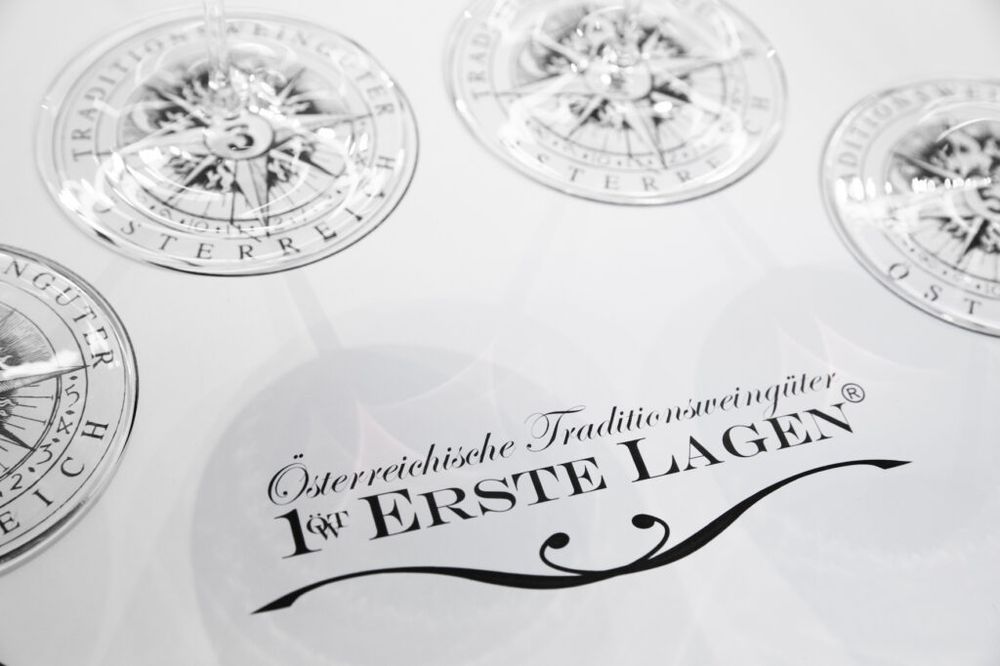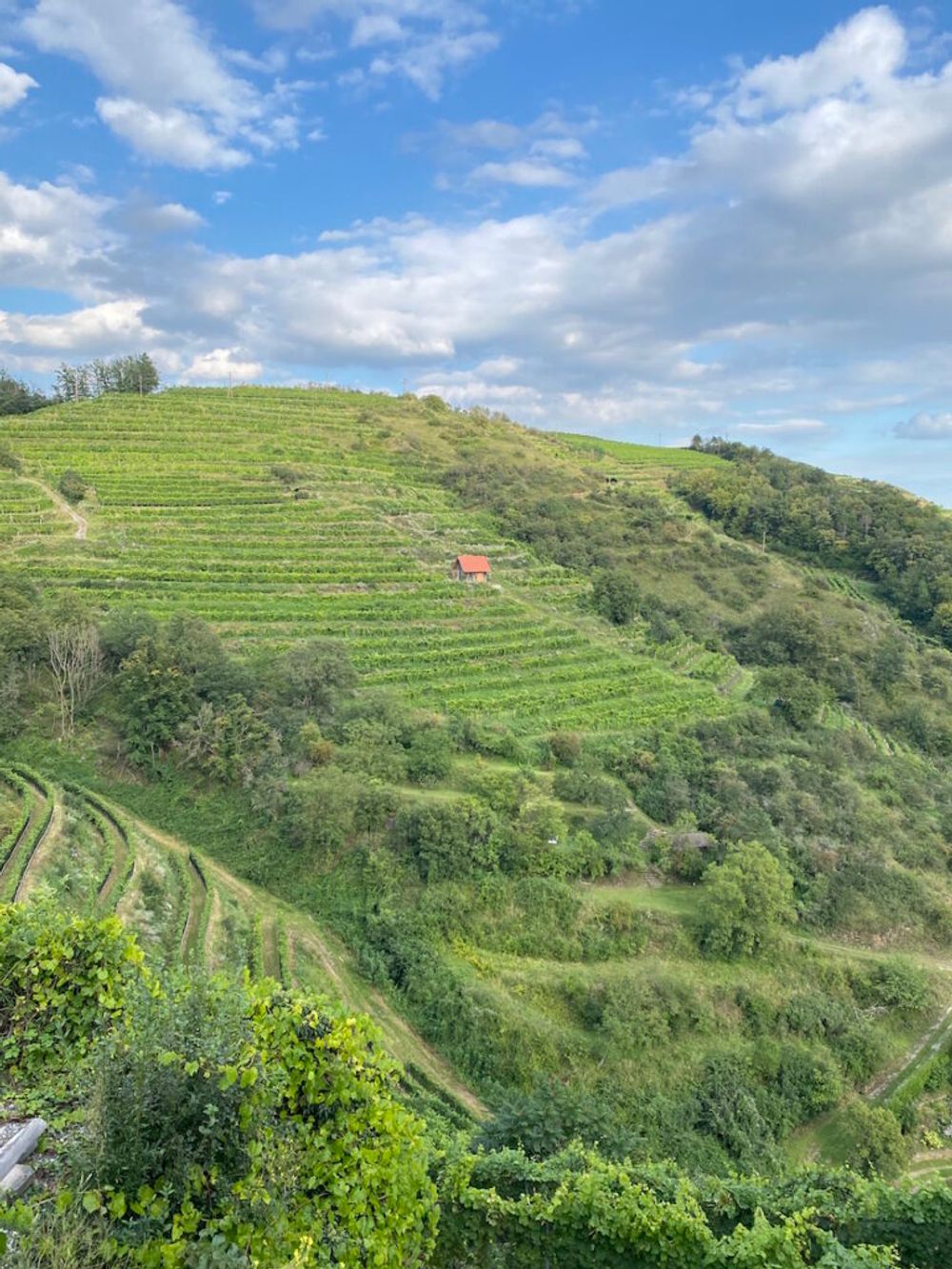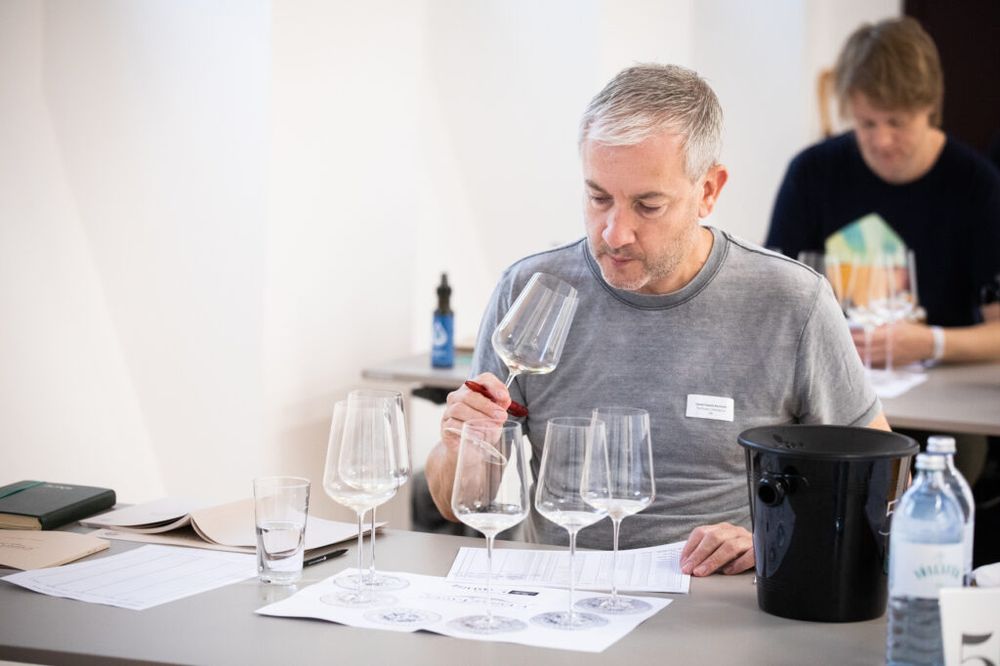“As you’d expect, some producers excelled over others, but just as a rising tide lifts all boats, those “perfect” conditions raised overall quality,” writes Kermode.
“I think it is a signal that life goes on.” With those quietly determined words from Michael Moosbrugger we were off, the annual ritual of the Erste Lagen launch underway, heralding a vintage that will be remembered for much more than the logistical challenges of its debut.
Calm, diplomatic and understated, Moosbrugger, the chief winemaker at Schloss Gobelsburg and chairman of the OTW (Österreichische Traditionsweingüter) was obviously keen to reassure those who had made it to Grafenegg, but also eager to talk about something other than Coronavirus: the thrilling 2019 vintage, one of the best in years.

Michael Moosbrugger OTW Chairman. © Anna Stöcher
“Unlike some other parts of Europe, 2019 was just a perfect year for us,” he told us, “we had a dry winter (which) delayed budbreak, so there was no danger of early spring frost. After heavy rain in May, throughout summer we had small amounts, at the right moments. The hottest month was June and from then it just got cooler, with perfect conditions for harvest.”
“There is no doubt that the 2019 vintage will be well remembered in the years to come,” he says, “you have the maturity, the acidity and there was no botrytis at all, so on our estate, we made no sweet wine at all.”

© Anna Stöcher
The expanding Erste Lagen
Founded in 1992, the Österreichische Traditionsweingüter has enjoyed a recent growth spurt, now boasting 67 member wineries across six DACs (Districtus Austriae Controllatus): the Danube region’s Kamptal, Kremstal, Wagram and Traisental, plus Vienna and Carnuntum, both of which joined in 2018.
Ten years ago, the organisation unveiled its first ‘Erste Lagen’ (Premier Cru) vineyards: a classification system described as a ‘system of orientation’ that takes account of the ‘significance’ of specific sites, from geology and climate to historical factors, with the total number of classified vineyards now totalling 81. In the next few years, work will start to classify the Grosse Lagen (Grand Cru) plots, but Moosebrugger estimates that will take another decade.
It is not all about classification. The OTW has been engaged in a stringent process of self-improvement, with the introduction of new quality standards, signed off by the member wineries in what Moosebrugger describes as “a simple democratic process.” The regulations stipulate maximum yield levels, the grapes exclusively hand harvested. OTW wineries must be certified either organic or sustainable, with herbicides and insecticides now forbidden.
“After the crisis of ’85 (a reference to the antifreeze scandal), we were very proud to have the strictest wine laws in the world. Now we are forming the regulations for the top segment of Austrian wine, we are motivated to create a benchmark throughout Europe,” he tells me, “it’s a focus on sustainability, as in Austria we have always had very high standards on environmental issues which were simply not communicated … so it is time to talk about it.”

Josef Maier, winemaker at Weingut Geyerhof, delivering samples of his wines to journalists. © Anna Stöcher
Tasting the new vintage
Talking is something that is not encouraged in the hushed antechambers of Grafenegg, as journalists, buyers and sommeliers diligently work their way through more than 200 new wines, the flights served to us by the winemakers themselves, this year harder to recognise in their Covid visors and face masks.
“In silent tastings where you have a fixed table and seat, it is easy to do the measurements necessary to be on the safe side,” says Moosebrugger, “and we have had very good feedback from all of the participants with regard to safety.”
With the event’s international focus, the ever-changing quarantine restrictions (Austria was recently removed from the UK’s travel corridors list) and neighbouring border closures meant turnout was lower this year, but not markedly so. Those of us who made it were mostly just delighted to be travelling at all.
And what a vintage! This was my third year tasting the latest releases and it was immediately clear that, despite their obvious youth, the 2019 wines were showing really well, feeling more complete, with a much better sense of balance evident across the board. As you’d expect, some producers excelled over others, but just as a rising tide lifts all boats, those “perfect” conditions raised overall quality.

Vineyard at Ried Hochäcker, Kremstal
The 10 best 2019 Austrian Erste Lagen wines
It was incredibly difficult to whittle the wines down to a top ten, but here are my highlights, limited to one wine per producer:
Weingut Cobenzl, Wiener Gemischter Satz 2019, Ried Steinberg, Wien, from a vineyard in Grinzing in the hills overlooking Vienna, this traditional field blend has been celebrated by residents of the city for years and is recognised as a DAC. There’s ripe red apple and tropical aromas of pineapple and passionfruit, the bright fruit dancing around a refreshing wet stone core, with just a hint of lip-smacking salinity on the finish. The alcohol in Gemischter Satz can get a bit heady, but this has been tamed, at 13.5%.
Weingut Sepp Moser, Grüner Veltliner, 2019, Ried Gebling, Kremstal,a biodynamic pioneer, Moser’s wines can sometimes divide opinion, but I am a fan. Delicate citrus and white pepper on the nose lead into a beautifully balanced wine that offers a real sense of calm, subtlety and finesse, all underpinned by a gentle mineral freshness.
Weingut Nigl, Riesling, 2019, Ried Hochäcker, Kremstal, from vines that seem to defy gravity on a steep hillside 300 metres above the Krems river (Hochäcker translates as ‘high acre’), a vibrant, fruit forward nose of pithy grapefruit, green apple and wet stone leads into a lovely clean, fresh wine.
Weingut Salomon Undhof, Riesling, 2019, Ried Kögl, Kremstal, the mineral notes hit you first, followed by gentle wafts of ethereal citrus, on the palate the pithy lemon and grapefruit is wrapped around a refreshing dark stone core.
Weingut Hirsch, Grüner Veltliner, 2019, Ried Gaisberg, Kamptal, a classic Grüner nose of lime zest and white pepper, with a minerality reflecting the crystalline rock, the seductive citrus, with a note of mandarin, has a gentle, but persistent intensity right through to the long satisfying finish.
Schloss Gobelsburg, Grüner Veltliner, 2019, Ried Grub, Kamptal,Grub might not be the most celebrated of this monastic institution’s plots, but it deserves acclaim for its vibrant nose of lime zest and lavish lick of wet pebble. The fruit is direct, but there’s also a subtle herbal undercurrent. A bit of a Cinderella, relative to its peers, the estate’s other more famous wines also excelled.
Weingut Bründlmayer, Riesling, 2019, Ried Heiligenstein, Alte Reben, Kamptal, from old vines, this was my overall favourite from an impressive range, perfectly poised, exuding a refined elegance with pithy white grapefruit and a hint of mango around a cool stone core.
Weingut Leth, Grüner Veltliner, 2019, Ried Brunnthal, Wagram, a peppery nose of fresh lime zest, with an intense citrus core. There’s a real sense of purity and balance, with a cool, clean finish.
Weingut Hiedler, Grüner Veltliner, 2019, Ried Kittmannsberg, Kamptal,a study in precision, with a gorgeous nose of lime zest, orange blossom and cracked white pepper, tightly woven texture and a refined, lingering finish.
Weingut Fred Loimer, Grüner Veltliner, 2019, Ried Loiserberg, Kamptal, generous citrus, a hint of ripe pineapple and baby banana, well balanced with a mineral freshness and quite a lush creamy texture.
Weingut Johannes Trapl, Blaufrankisch 2018, Ried Spitzerberg, Carnuntum, bursting with bright red cherry, blueberry and foraged blackberry, the searing acidity brings it all into check. The tannins are fine-grained, there’s a gentle hint of game and a lingering mineral note to the finish.
David Kermode is a wine presenter, writer, broadcaster and judge with his own website vinosaurus.co.uk

David Kermode at the tasting. © Anna Stöcher
































